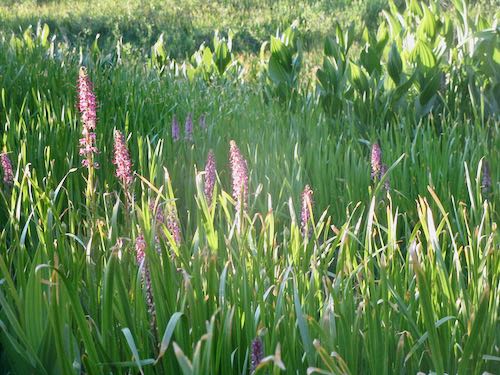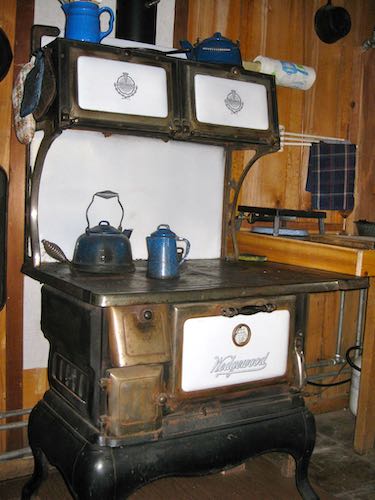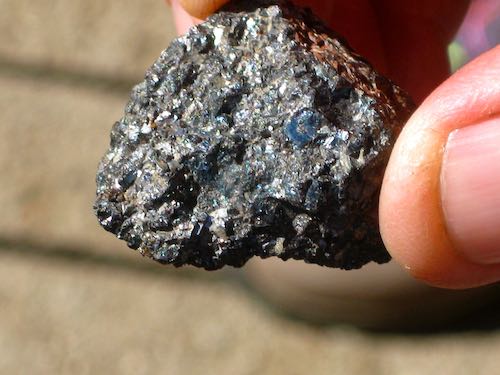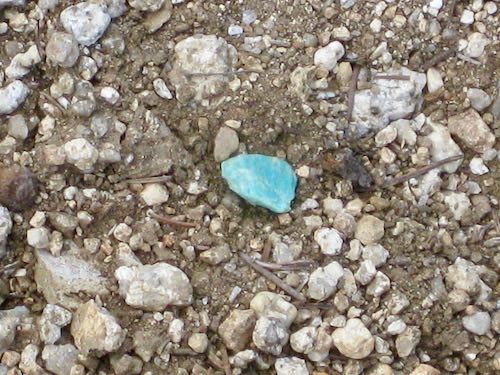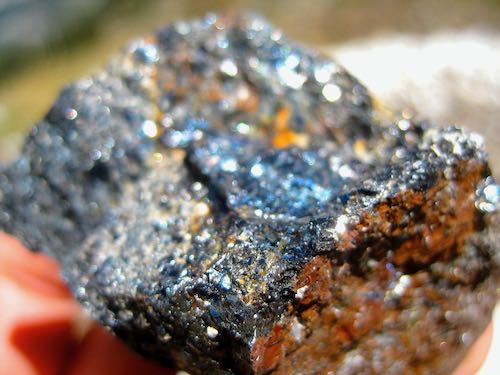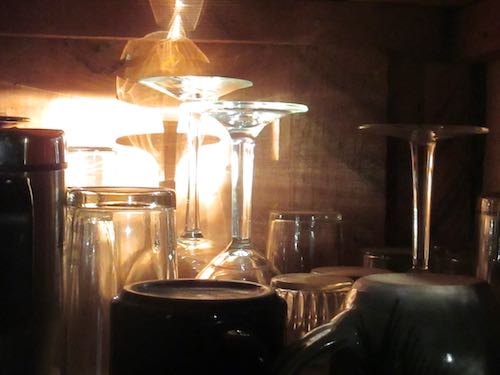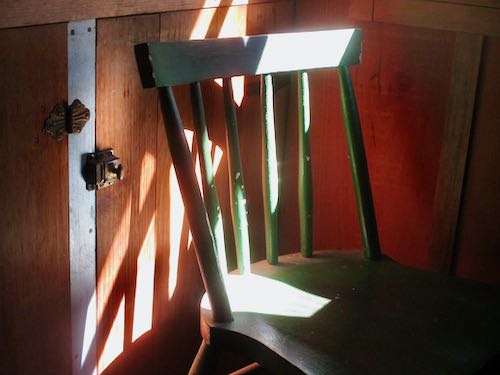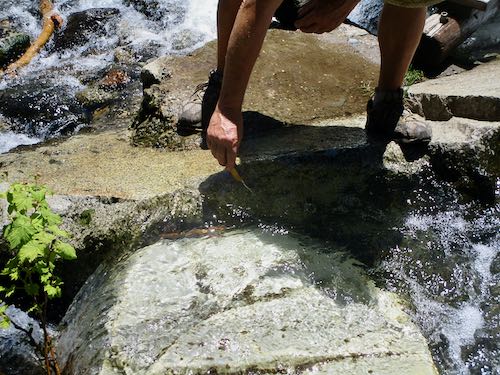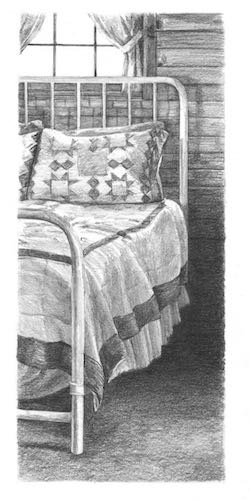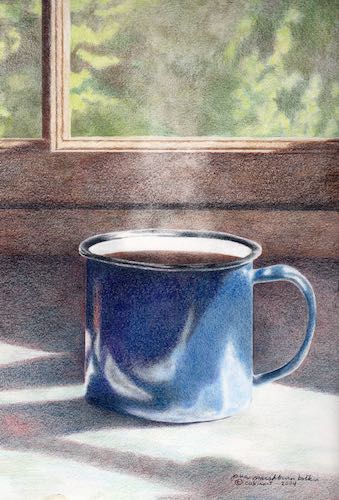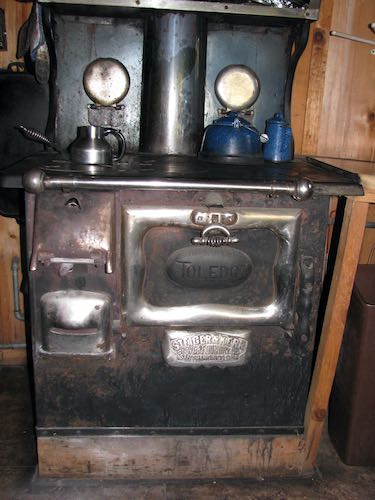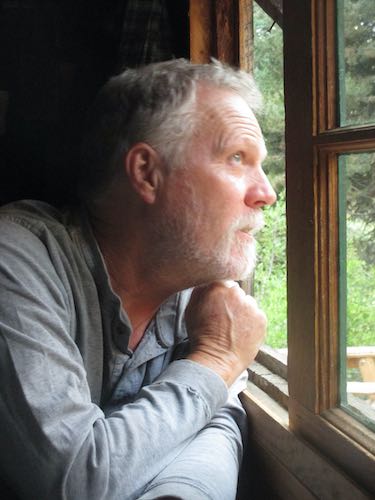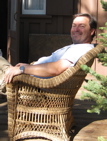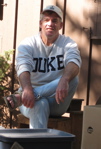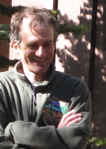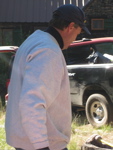Gardening
What do we do at the cabin?
Sometimes I garden.
Gardening at a mountain cabin? What are you talking about??
When I first married into the cabin, I admired some bearded iris across the creek at another cabin.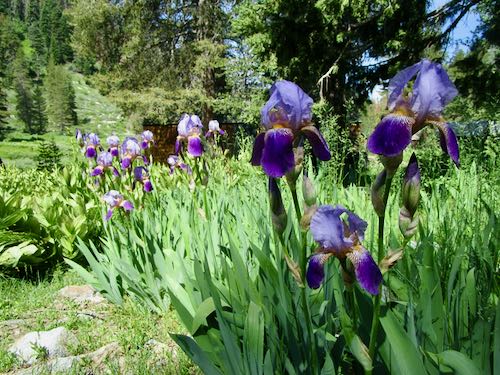
Then, I transplanted some from our real house to the cabin. 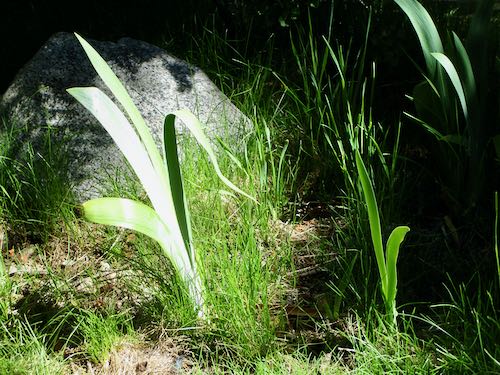
We have had one bloom; it was in July, 2017. (Only took me 15 minutes to find that date. . . the photo was so unremarkable that it got deleted awhile ago.)
A neighbor has a lush front yard, and she graciously allows me to transplant things, which sometimes survive. 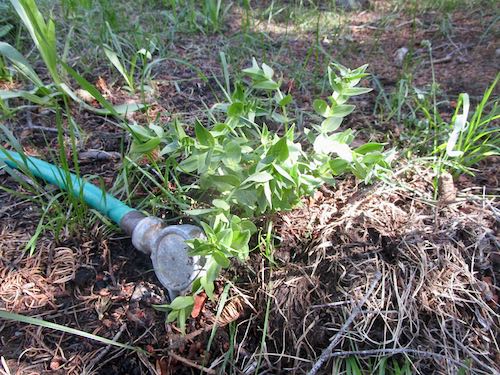
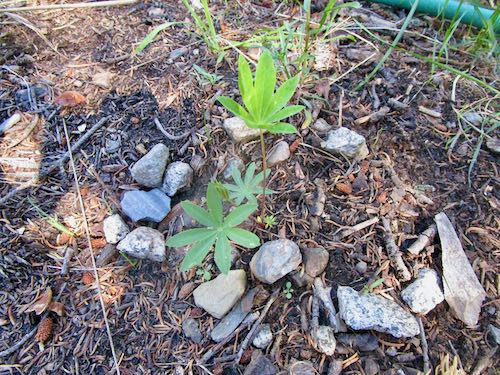
A trick is to keep the transplants watered, and to mark them so that people don’t just assume it is basic forest floor, free for unstructured trampling.
We have lots of currant bushes in the area, and they get full of dead branches. My theory about this is that the bushes will thrive and grow if the old stuff is cleared away. Sometimes I wonder if, when I pull out the dead stuff, the shrub is thinking, “HEY! I was eating that!”
It is possible that I have too much thinking time.
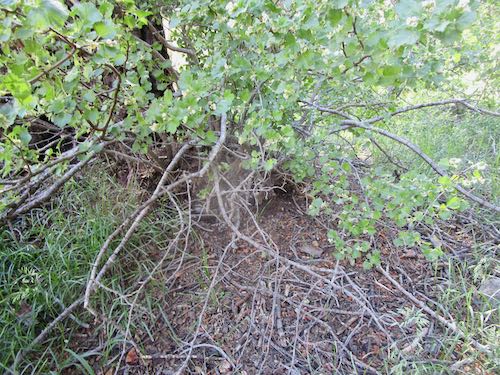
When the fire crews were clearing brush in an arbitrary manner during the fall of 2021, they made these very neat rows of their prunings. Random hacking, organized stacking. They won’t be returning to haul these piles away, so I am now using them when I do my own clearing.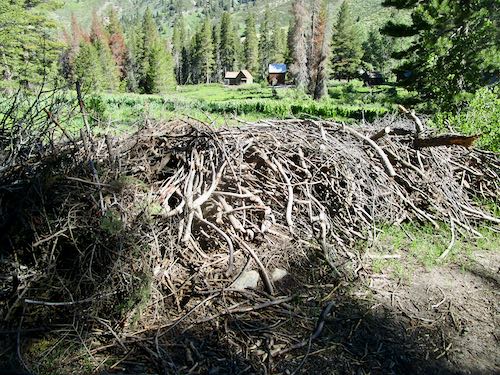
Sometimes I rake, sometimes I use the large magnet on a pole to gather nails in a nearby driveway. (That’s another story, a long one.)
And sometimes I wander around, wishing that I knew when and how to transplant things from God’s garden.